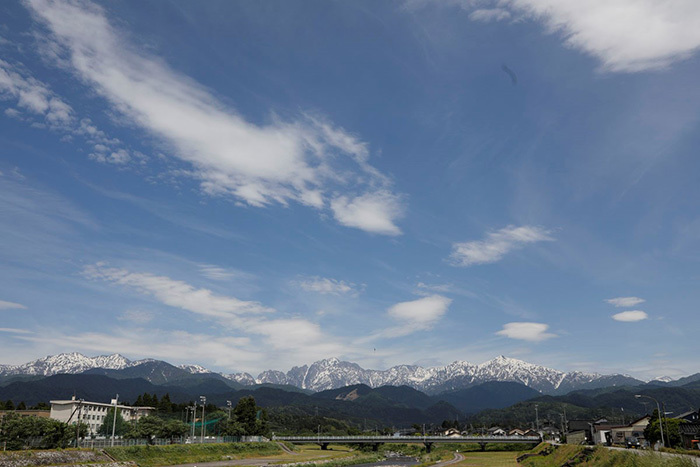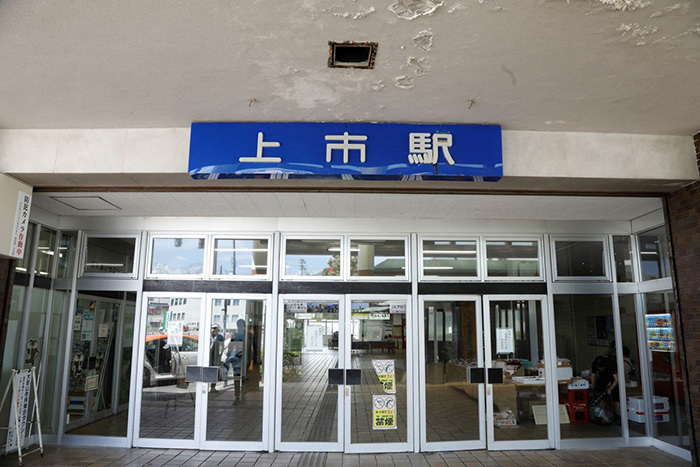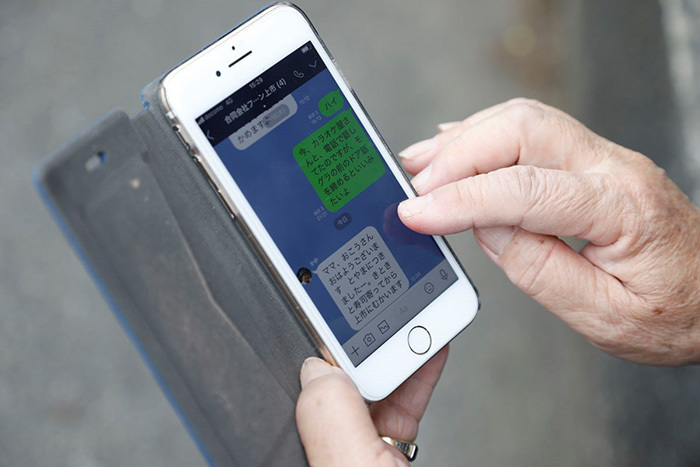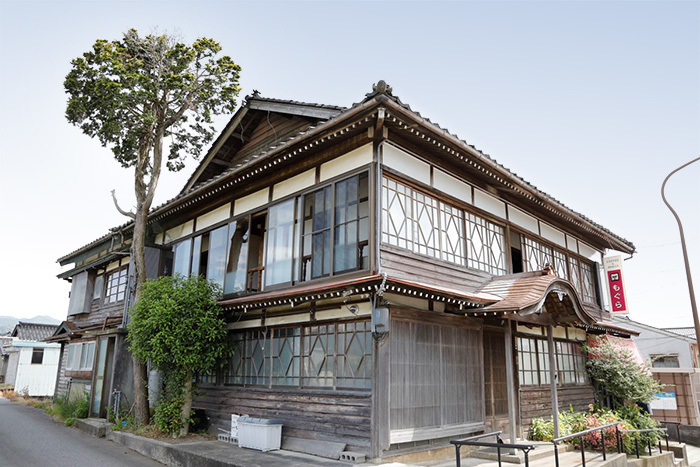Note: This website was automatically translated, so some terms or nuances may not be completely accurate.
Using Digital Know-How to Promote "Relocation"! What is Kamiichi Town's Initiative?
Civic tech refers to residents themselves solving local challenges using technology. However, it is not solely defined by "professional engineers living there developing new systems or tools for the community."
This series focuses on introducing examples of what we might call "broad civic tech" – where residents utilize existing IT/ICT services like social media and smartphone apps to revitalize their communities.
This time, Takuya Kagata of Dentsu Digital Inc. introduces a civic tech case study from Kamiichi Town, Toyama Prefecture, which incorporates "digital-style analysis" and "IT training for seniors" into its relocation promotion measures.
<Table of Contents>
▼ Kamiichi Town's Challenge: Population to Drop to 3/4 in 20 Years? Significant Population Decline
▼Defining Migrant Personas to Develop Targeted PR Campaigns
▼Seniors over 75 using LINE and Airbnb
▼Clear Intent and Metrics Facilitate Smooth Handover
▼ Town Residents Also Want to Operate Guesthouses Using the Same System
Kamiiichi Town's Challenge: Population to Drop to 3/4 in 20 Years? Significant Population Decline
Kamiiichi Town, located in eastern Toyama Prefecture, borders Toyama City, the prefectural capital. Using the Hokuriku Shinkansen, Tokyo is within a 3-hour reach.

The iconic peak of Mount Tsurugi, a symbol of the region, is also known as a mountain for Shugendo ascetic practices, with many temples remaining as vestiges of this history. It is also famous as the setting for films like "Tsurugi: The Record of Points" and "Wolf Children: Ame and Yuki". The foothills are rich in nature, providing an environment well-suited for ecotourism.

Furthermore, Kamiichi Town has a thriving industrial sector. Many manufacturing companies, primarily pharmaceutical firms, have established bases here, including the headquarters of Ikeda Mokando, known for its anti-itch product "Muhi."
Despite possessing these diverse "assets," Kamiichi Town, like many regional cities in recent years, faced severe population decline.
The town's population, which stood at 21,965 in 2010, dropped by over 1,000 people to 20,930 just five years later in 2015 (according to the Ministry of Internal Affairs and Communications Census). Furthermore, projections by the National Institute of Population and Social Security Research suggest the population could fall below 15,000 in 20 years. This represents a dramatic decline.
To halt this decline, Kamiichi Town actively implemented relocation initiatives. However, there was significant room for improvement. That's why, when I became involved with the town, I introduced elements of civic tech.
Defining Immigrant Personas and Crafting Targeted PR
I first visited Kamiichi Town in 2017. Through the Cabinet Office's " Regional Revitalization Personnel Support Program," I was dispatched to Kamiichi Town for two years.
I implemented two civic tech initiatives in Kamiichi Town.
The first was utilizing the "customer journey map," a common digital marketing tool, to fundamentally rethink the relocation strategy. A customer journey involves creating a fictional persona of the target customer and analyzing their actions and thoughts chronologically. It's a method for devising precise approaches at each touchpoint.
Not just in Kamiichi Town, but often regional relocation initiatives are implemented without clear KPIs. Kamiichi Town also had a vague idea about the ultimate number of people they hoped would relocate.
Analysis of various statistics suggested that an annual migration rate of about "10 households" would be a sufficient achievement for a town of this size.
If the annual KPI is "10 households relocating," there's no need for nationwide outreach. Directly appealing to Tokyo residents to "move to Kamiichi Town" wouldn't be very effective. We concluded we needed to reach a much narrower, more targeted audience directly.
This is where we began incorporating the customer journey approach. First, when defining the personas of the individuals we wanted to attract, we narrowed it down to four types within and outside the prefecture.
Next, by researching and analyzing the behaviors and lifestyles of these personas, we examined their information touchpoints and identified effective selling points for Kamiichi Town to appeal to them.
One of these four personas was residents of the adjacent city of Toyama, specifically "families with young children" and "those considering building a home." Analysis revealed that Toyama residents actually have a weak image of Kamiichi Town.
Despite being adjacent, they knew little about Kamiichi Town. When asked about their image of Kamiichi Town, many Toyama City residents responded that it was "far from Toyama City." In reality, Kamiichi Town is close enough for commuting to work or school in Toyama City, but there was a significant gap between reality and perception.
Therefore, we devised a PR strategy to encourage Toyama citizens to visit Kamiichi Town. However, rather than betting everything on one approach from the start, we tested two PR methods simultaneously, measured their effectiveness, and formally adopted the one that generated a better response.
This method of testing multiple approaches to determine the final "main strategy" is commonly used in digital marketing (such as A/B testing). We applied this approach to the government's relocation initiative.
- Strategy A: Publish a feature article on Kamiichi Town in a free paper distributed to daycare centers in Toyama City
- Strategy B: Have popular Toyama City bloggers write articles featuring Kamiichi Town
After a period of test marketing, Strategy A proved more effective and was formally adopted. For the next two years, articles were regularly published in the free paper, with ongoing effectiveness measurement. Surveys of families in Toyama City show that awareness and favorability toward Kamiichi Town have increased year after year.

Seniors over 75 years old using LINE and Airbnb
Next came tourism initiatives. Here, we also provided IT training for seniors living in the area.
There was an unavoidable challenge in getting people to visit Kamiichi Town even once and experience its appeal: the lack of lodging options. After all, unless they stay overnight, the region's charm—the kind that makes you think "I want to live here"—simply doesn't come across.
While exploring options for new lodging in the town, I met Kazuko Hosokawa, who runs the coffee and snack shop "Mogura" in Kamiichi Town. She had previously served as head of the Chamber of Commerce's women's division and had been running her shop for 40 years. I became a regular customer myself and affectionately called her "Mama" (laughs).
Mogura operates in the basement space, but this building actually used to be a traditional Japanese-style inn run by Ms. Hosokawa's father. The first and second floors, which were the guest rooms back then, were unused. So, I proposed renovating the first and second floors into a guesthouse. She had long been concerned about Kamiichi Town's depopulation and agreed.
Ms. Hosokawa and I, along with Masayoshi Mikoshiba and Yasukazu Yoshitama from the startup "dot." (which handles inn management services), joined forces to run it. We launched as "Guesthouse Shogetsu" in December 2018.
Now, this Guesthouse Shōgetsu also incorporates civic tech elements. Ms. Hosokawa is 75 years old. While she isn't particularly IT-savvy, we handle daily guest recruitment with dot.'s support by creating a dedicated Airbnb page. Responses to guest reviews and comments are outsourced to Japanese-speaking talent in the Philippines. They handle these based on instructions from the operators. It's a system made possible by the internet age.
Furthermore, since Mr. Hosokawa, myself, dot. members, and other stakeholders usually live apart, we decided everyone would share information via an online shared dashboard. For daily facility cleaning, we recruited local senior workers over 80 years old. Naturally, these members also carry smartphones and use the dashboard. Additionally, for individual detailed communication, everyone learned how to use LINE.
As a result of everyone learning to use these tools, a system was established where Mr. Hosokawa and other members share basic information like Airbnb booking status and guest notifications via the dashboard, while using LINE for detailed questions and improvement discussions. This allows us to monitor operations remotely.

As a result, Guesthouse Matsuzuki now operates at over 60% occupancy. The effectiveness of attracting guests through Airbnb means many foreign tourists discover and stay here during their travels, helping to increase stays in Kamiichi Town.
Finally, we present comments from the administrative official who collaborated on implementing customer journey initiatives and from Mr. Hosokawa.
The clear definition of initiative objectives and metrics makes handover much easier.

About two years ago, we adopted Mr. Kagata's proposal to incorporate customer journey analysis into our town's relocation promotion initiatives. We calculated specific numerical targets for each year and created clear target personas. Then, we used digital tools to verify the effectiveness of each individual initiative. As a result, we were able to develop a much clearer plan.
Previously, our relocation PR targeted almost exclusively people in Tokyo and the greater metropolitan area. However, once we established personas and numerical targets, we realized we should also focus on reaching families in Toyama City. Under the clear policy of first attracting visitors from neighboring cities and prefectures, we believe we were able to develop a long-term design.
While long-term commitment is crucial for initiatives like relocation promotion, government personnel inevitably rotate every few years. However, this time, the specific intent behind each measure and the concrete annual targets made handover easier even when personnel changed. I feel the continuity of our initiatives has improved.
The same system also supports residents who want to operate guesthouses.

While serving as the Chamber of Commerce's Women's Division Director, I felt compelled to do something about Kamiichi Town's declining population. I run a cafe and snack bar here, using the basement of what was once my father's traditional Japanese restaurant and inn. The ground floor, however, had remained vacant for years. So, after consulting with Mr. Kagata and others, we renovated that empty ground floor into lodging facilities.
Since opening as "Guesthouse Matsugetsu," we've welcomed guests from places like the US and Taiwan. Our occupancy rate exceeds 60%, a situation unthinkable without the internet. We've set up a sustainable system for managing Airbnb guest interactions, such as outsourcing tasks to people in the Philippines.
Furthermore, the room cleaning staff are also elderly residents of Kamiichi Town like me, but everyone has learned to use dashboards and LINE for work communications. I couldn't have done this alone; it was precisely because we joined hands with various people from outside that we could take on this challenge.
In Kamiichi Town, there are other vacant traditional houses besides ours, and people come to consult us about starting guesthouses in the same way. I believe the success of this guesthouse is energizing the town's residents.

Was this article helpful?
Newsletter registration is here
We select and publish important news every day
For inquiries about this article
Back Numbers
Author

Takuya Kagata
Dentsu Inc.
Global Business Center
Chief Business Design Director
Dentsu Marketing Division ~ Dentsu Digital Inc. ~ Dentsu Consulting Inc. supports corporate business design, including an insurance company's 2050 vision, an automaker's smart city concept, and a food company's new ventures. Specializes in consulting grounded in urban engineering and facilitation that breaks down silos. Captain of the Dentsu Sumo Club. Right-handed. Signature move: left-handed throw.
Articles by this person

Deepening discussions about the future through 'Dentsu Inc. Future Mandala 2025.' What kind of future will be woven by the diversifying concepts of 'connection' and 'abundance'?


